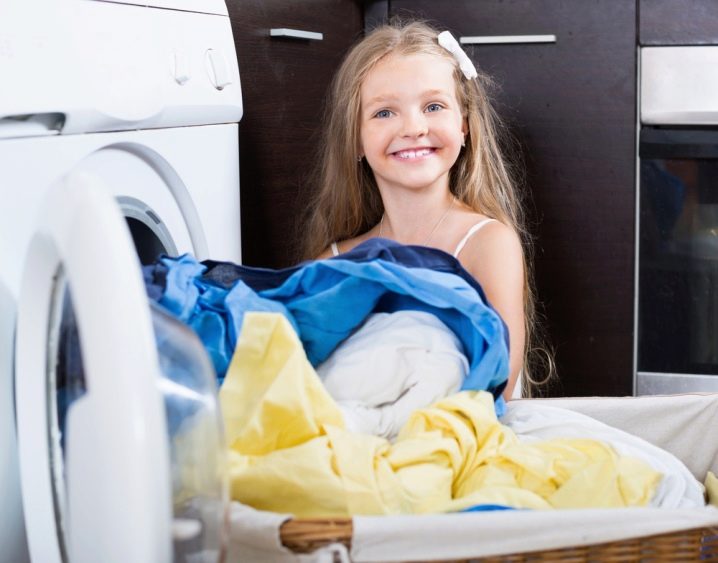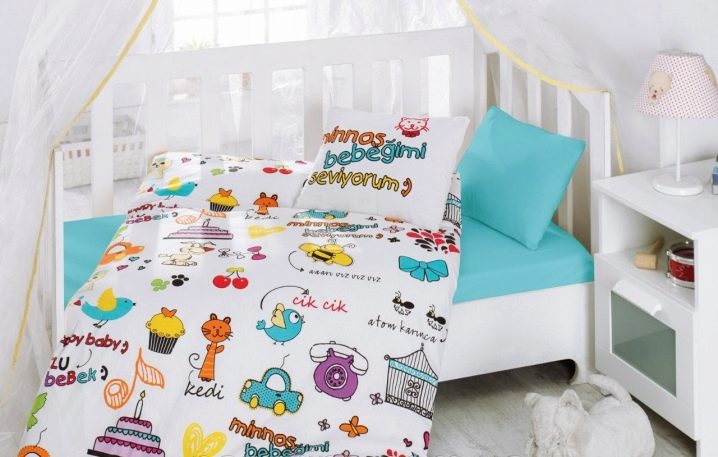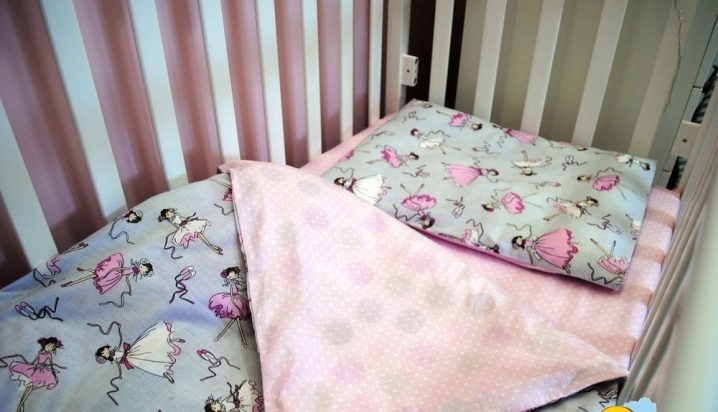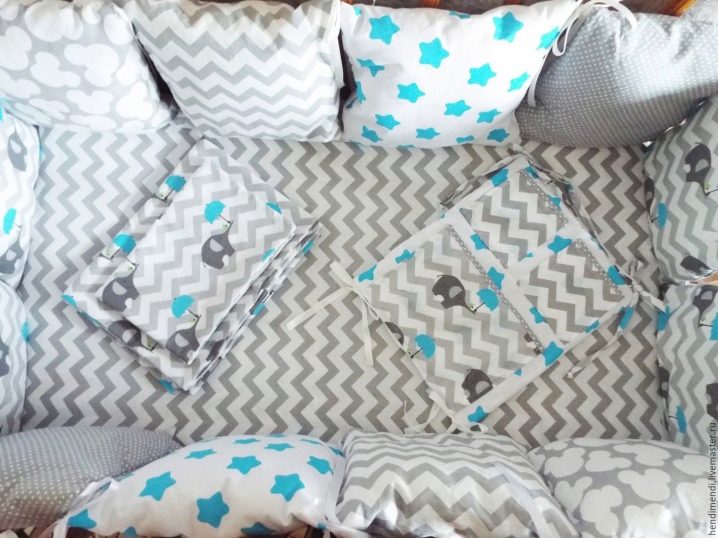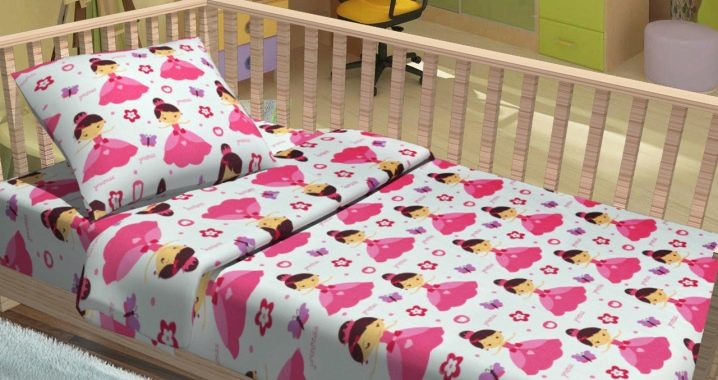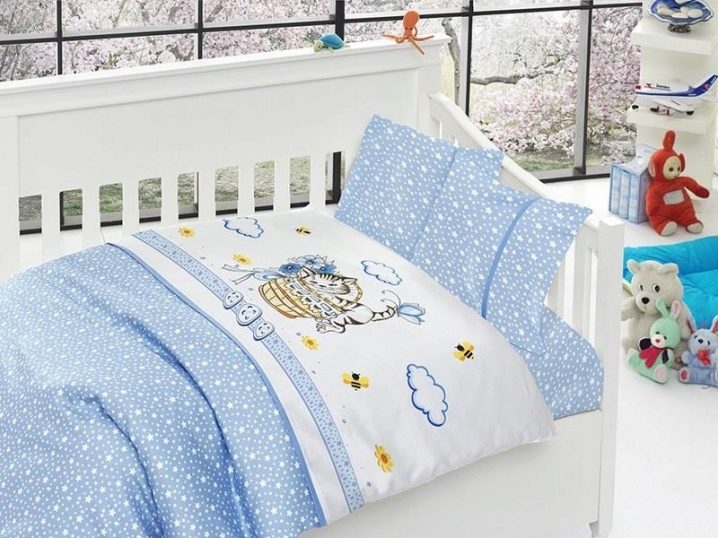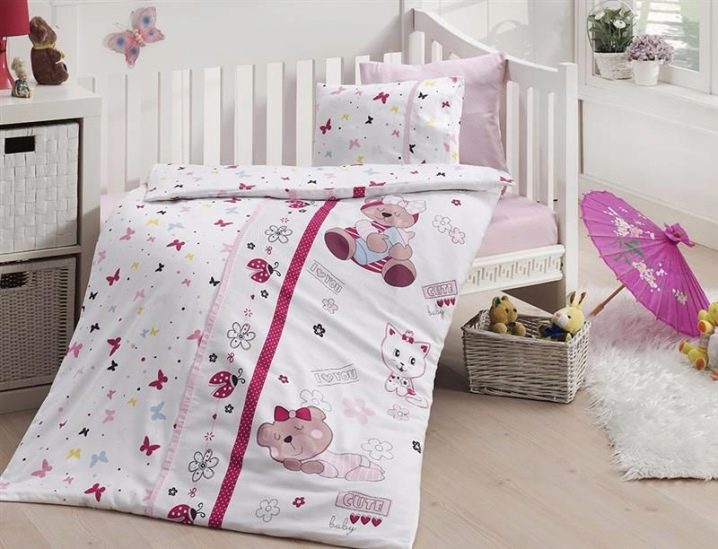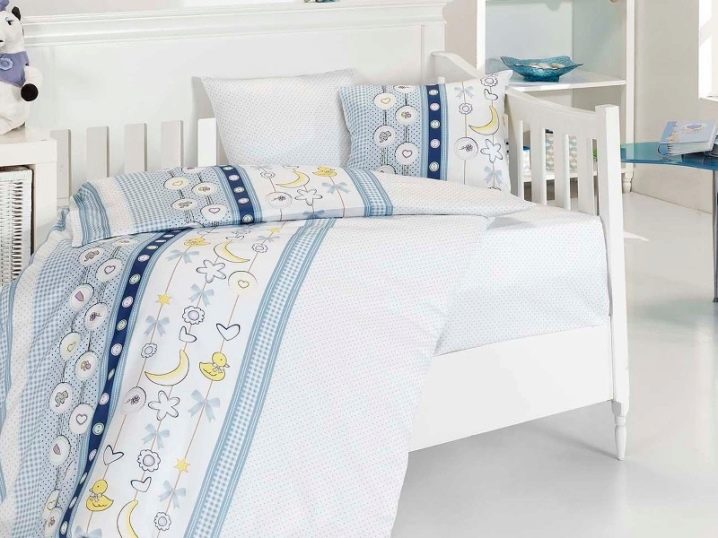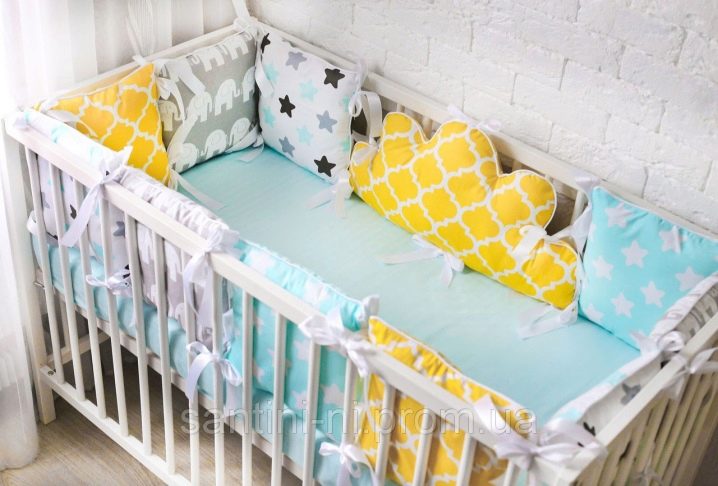Choosing fabrics for baby bedding
In order to provide a child with high-quality and healthy sleep, it is necessary to take a responsible approach to the choice of fabric for sewing bed linen. It must meet all safety requirements, be soft and pleasant to the touch.
Sleeping in a crib with bedding made from such materials, the baby will gain strength and vigor to learn about the world.
Characteristics of children's fabrics
For the arrangement of the children's bed should be selected quality materials. They must meet basic requirements.
- Be safe for the baby. Bedding should not excrete harmful substances that can lead to dermatitis, allergic rashes, itchy skin and other problems. In the manufacture of such materials should not be used chemically "aggressive" dyes.
- Have a hygroscopic effect. Often, the children sweat during the night or daytime sleep, so bedding should absorb excess moisture well and dry quickly.
- Well pass the air. Natural circulation will allow the skin to "breathe", thereby creating favorable conditions for high-quality rest.
- To promote the absence of static accumulation.
- Differ in color fastness. Sometimes it happens that the patterns with colorful and bright fabric after sleep remain on the skin of the child. This should not be.
- Be comfortable. The bedding material should create a pleasant tactile sensation when in contact with the body.
- Have sufficient strength and durability. The fact that the bedding in the crib gets dirty much more often than in the adult. Therefore, it is important that the material could withstand more than a dozen washes while preserving their original qualities.
- Ease of care. This is an optional criterion. However, any parent will appreciate if the fabric is easy to wash off, dry quickly and smooth out without much effort.
An important selection criterion is the appearance of the fabric.Before falling asleep, many children look at the drawings on the duvet cover, pillowcase, or sheets. Therefore, images on bedding should be unobtrusive, but attractive to kids.
Types of fabrics
For sewing bedding best suited fabrics made from natural fibers. They meet most of the requirements for the quality of baby clothes. Consider the features, advantages and disadvantages of some of them.
Chintz
This is a thin cotton fabric that does not contain artificial fibers. Its advantages include absolute safety for the health of the baby, ease and affordable cost. The lack of chintz is its poor wear resistance, which is why this material is able to “lose” the appearance after several washes.
Satin
Dense material with a silky texture. He does not "sit down" when washing and practically does not wrinkle. In addition, its advantages include high durability and excellent aesthetic qualities.
However, such material is preferred by few because of its high cost.
Calico
This fabric perfectly absorbs excess moisture, promotes the natural circulation of air, "cools" the skin in the summer heat and warms in the cool.This fabric makes beautiful bedding. A large variety of shades and patterns allows you to choose the material for every taste. However, there is such a fabric and disadvantages.
The disadvantages include its stiffness and low density, because of which the laundry is able to quickly "fail."
Flannel
This is one of the most pleasant to the touch fabrics. It is soft, hygroscopic, safe and durable. This warm material will not cause allergic rashes in a child and will promote comfortable and healthy sleep. The disadvantages of this material are minor. These include shrinkage, long drying and abrasion of the pile during operation.
Cotton
This material is highly hygroscopic, affordable and practical. It is light and pleasant to the touch. The disadvantages of this fabric include the possibility of shrinkage, rapid fading when exposed to sunlight, wrinkling.
Such material will not be able to serve for a long time.
Linen
The natural material possessing the best hygienic qualities. It quickly absorbs the formed moisture, helps to maintain an optimal temperature.In addition, flax has bactericidal properties. The material prevents the development and active reproduction of bed mites and other microorganisms. It has such a fabric and cons. These include excessive stiffness and high price.
Because of these features, flax is not suitable for babies.
Bamboo
Natural material based on bamboo fibers has been gaining popularity recently. Bedding is made of it for both babies and older children. Bamboo is famous for its antimicrobial properties, hygroscopicity and hypoallergenic. Bedding sets from this fabric are suitable for babies with sensitive and delicate skin. The significant disadvantages of bamboo include its high cost.
Some manufacturing companies produce bedding for children from blended fabrics. Such materials are obtained as a result of "mixing" of natural fibers with synthetic ones. The result is beautiful-looking fabrics that do not “sit down” during washing, do not wrinkle easily, are easy to wash, and are durable. However, such fabrics have poor hygiene.In addition, they accumulate static electricity, making the child’s sleep uncomfortable.
The best fabrics for baby beds are completely natural. Among the vast diversity of such materials flax, cotton and bamboo are considered the best.
If parents want to ensure the highest quality and comfortable rest for their child, you should choose bedding from these natural fabrics.
Colors
When choosing a set of bed linen or fabric for a duvet cover, pillowcases or sheets, you should consider its colors. Scientists have long proved that the color scheme is able to influence the psyche of a child, his mood and behavior.
When buying fabric in a baby cot, it is better to choose products of delicate pastel colors. White and milky shades will help calm and relax the child, ensuring his quick bedtime. Pale blue, pale pink and beige tones of bed linen will also “help you fall asleep”. It is important to note that there should not be numerous bright images on the accessories. It is better that the number of pictures was limited, and their tones were light.
Bright colors such as green, red, orange, blue are able to charge children with vivacity and give them energy. Due to these features, bedding with such shades is recommended for beds of babies who are already beginning to show interest in games.
When choosing a fabric for a children's bedroom set, it is worth refusing to purchase materials of dark tones. Blue, black, purple, dark brown colors will cause anxiety in the child.
Bed linen of such colors will not allow the crumbs to relax and quickly fall asleep.
Recommendations
To choose the best fabric for a duvet cover, a pillow case and a sheet, should take into account a number of important points.
- The material should be smooth to the touch. The uneven texture of the appliqués and inserts is capable of delivering unpleasant sensations when it comes into contact with the delicate skin of a child.
- From the fabric should breathe unobtrusive textile flavor. If it smells harsh, you need to abandon its acquisition. In this case, there is a risk to buy material, in the production of which low-quality dyes were used.
- Before purchasing a fabric, you should ask the seller to provide supporting documentation, such as a quality certificate. In the absence of papers, it is better to buy material in another store.
- It is best to purchase fabrics for bed linen in large retail outlets specializing in the sale of children's textiles.
- One of the best in terms of quality and cost are Polish, Turkish and Russian materials.
Observing all the above recommendations, you can easily get high-quality and beautiful fabric for a stylish children's bedding set.
See the following video for tips on choosing baby bedding.


